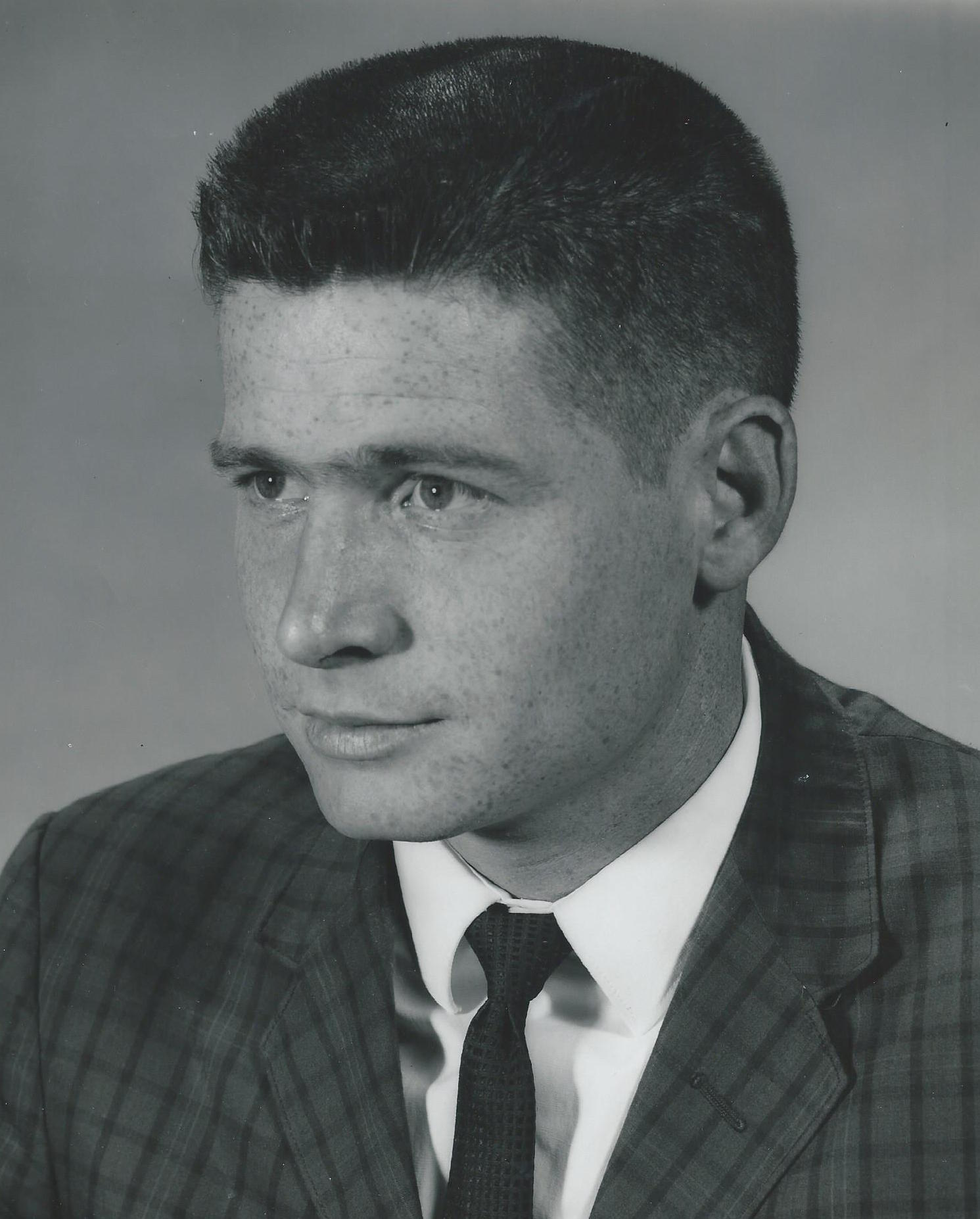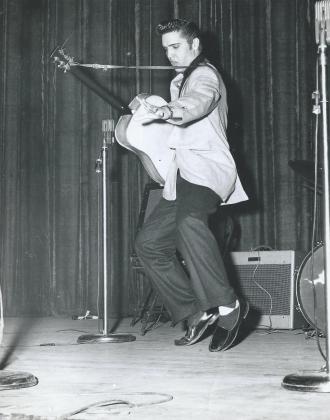
TULSA — The picture is black and white.
Taken 67 years ago in Oklahoma City, it’s a photo of young Elvis. Slim. Hair in a pompadour. Standing on tiptoes. Elvis had just turned 21. His guitar is swung to the right side. His left hand is thrust toward the audience.
His legs are doing all the heavy work, call it an early version the pelvic thrust.
Behind him, the stage is sparse, a couple of amplifiers and a single microphone. This was Elvis when he was known as the Hillbilly Cat. He wasn’t yet the king. This was young Elvis, appearing in Oklahoma City at the Civic Center Music Hall.
The photo is an iconic image of early Elvis.
But that photo, taken on April 19, 1956, by a 17-year-old photographer named Mandell Matheson, would never be published by the newspaper Matheson worked for, The Daily Oklahoman. The paper’s editors, Matheson’s wife said, weren’t happy with the picture.
That photo of young Elvis, the editors said, was “too salacious.”
Remember this was 1956 in Oklahoma City – the Buckle of the Bible Belt.
Instead, the front-page story – written by reporter Jack Jones – featured a ‘mug shot’ of Elvis and a photo of three of his fans. There was no photo of Elvis in action.
Still, Elvis would make the paper’s front page. Jones described Elvis as a “cross between Marlon Brando and Johnny Ray.”
“Last September nobody outside of the Grand Ole’ Opry promoters had ever heard of him, “Jones wrote. “They picked him up, decided he wasn’t exactly suited for the hillbilly type songs and built a new show around him. Since then, he has become a king of the teenage ‘cats.’”
Elvis may get to sing, and he may have gotten some ink in Oklahoma, but The Oklahoman newspaper wasn’t gonna show Elvis singing.
Or swaying.
Or thrusting.
Still, Jones’ story did try to give readers an idea of Elvis’ performance: “[H]e leaps out onto the state with a guitar slung over his shoulders and hunkers at the microphone animal fashion. He bounces and wiggles every limb, stand on his toes, crouches as if he is about to leap out into the audience…” but even then, Jones’ copy falls far short of that single photo.
Early Elvis – complete with Argyle socks – was dancing his way to history in Oklahoma City. It was a photograph, one magazine editor said, that would have easily been a cover shot.
Instead, the Elvis’ photo was filed away in a cardboard box and Mandel Matheson enlisted in the Marines for the Korean War.
After the war Matheson returned to Oklahoma. He worked as a highway patrolman and covered the courthouse as a reporter for the now-defunct Tulsa Tribune.
During the same time, Elvis’ career took off.
Just months after his appearance in Oklahoma City, Elvis starred in the film “Love Me Tender.” A year later, he would swing his hips in the movie, “Jailhouse Rock” and, four years after that, in the film, “Blue Hawaii.”
By 1972 Elvis was known as the King of Rock and Roll, selling millions records. That same year, Mandel Matheson would give up journalism and run for office.
He succeeded.
Matheson was elected and represented House District 72 from 1972 through 1978 in the Oklahoma House of Representatives.
Meanwhile, Elvis toured and sang, staged a comeback special, landed an extended residency in Las Vegas and became famous around the world.
But in the summer of 1977 the King was no more.
After a long struggle with drug use and an unhealthy lifestyle, Elvis died at his Memphis home, Graceland, on Aug. 17, 1977. He was 42.
In Tulsa, Mandell Matheson’s photo of a young, vigorous Elvis gathered dust in a cardboard box, unpublished and remembered only by his family.
A year after Elvis died, Matheson, his wife Karen said, decided not to seek reelection. Mandell Matheson had enough of being a state representative and, instead, turned his talents to public relations and helping others get elected.
“He did several campaigns,” Karen Matheson said. “He worked Jim Townsend’s campaign and the campaign for Andy Coats.”
Matheson worked hard for his clients. In 1980, he managed Townsend’s unsuccessful campaign for the U.S. Congress and Coat’s campaign for U.S. Senate.
Lobbying would come later.
“He was a reluctant lobbyist,” she said. “He didn’t start until 1984 and only then because it was a last resort.”
Still, Mandell Matheson was an effective lobbyist and considered a major powerbroker at the Oklahoma Capitol in the early 1980s. He was successful, his wife said, because he knew what he was doing.
“He really didn’t want to lobby, but he was good at it,” she said. “It was, ‘I know how to do this, ‘cause I helped do it for a long time.’ He could work with anyone, Republicans or Democrats. He would work with who he needed to work with.”
Lobbying became the perfect fit.
Matheson represented groups in which he believed. He supported causes and was, as Karen Matheson said, an “unapologetic crusader.” He even continued to take photographs for a while.
But in 1986 Mandell Matheson put down his camera. By that time, his wife said, he had lost interest in photography.
And though he considered sending his photos of Elvis to the museum in Graceland, he would eventually decide against it.
“I think he kept it because it was his own slice of history,” she said.
His photo of Elvis would remain unpublished until it was reproduced in a college newspaper on the 40th anniversary of Elvis’ death. Though frustrated his photo wasn’t used when it was taken, Karen Matheson said her husband would be proud to know that his iconic picture of the King was finally seen by people.
“He wanted people to see what he saw, and he would have been happy wherever it was seen,” she said.
As for Elvis’ music?
Mandell and Karen Matheson saw Elvis preform 17 years later in 1973 – a concert that would mark Elvis’ last appearance in Tulsa. But even then, Mandell wasn’t what could be considered a major fan of The King.
“Oh, to him Elvis’ music was okay,” Karen Matheson said. “But given the choice, he preferred Merle Haggard or Willie Nelson.”
Mandell Matheson died at his home in Tulsa on Dec. 10, 2011.


